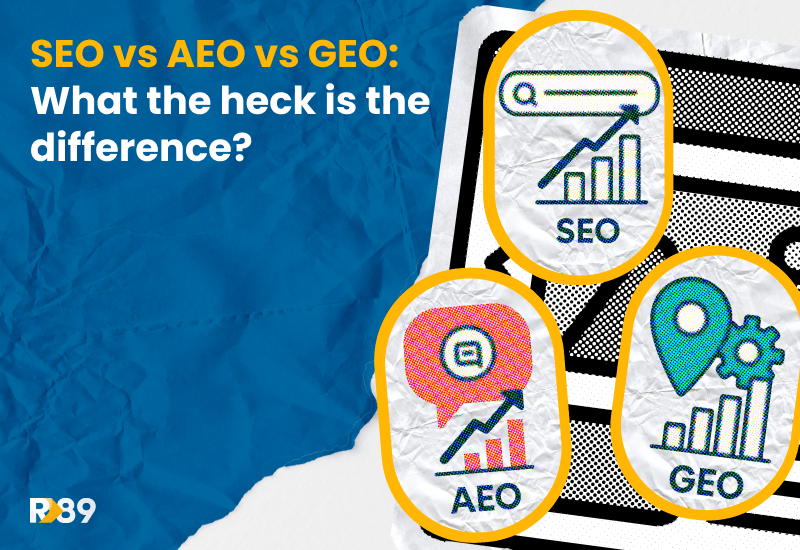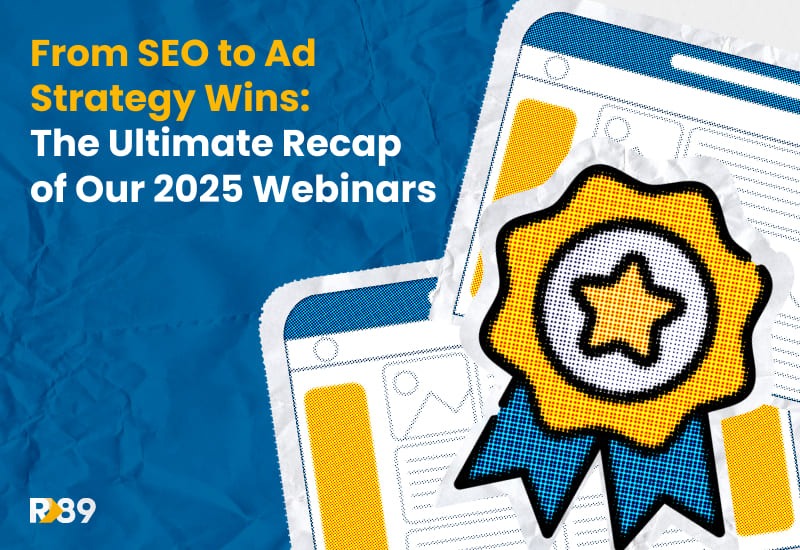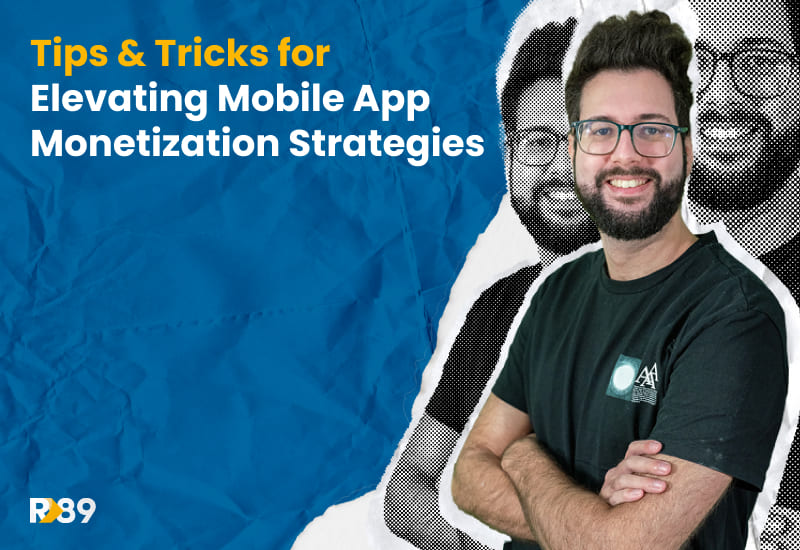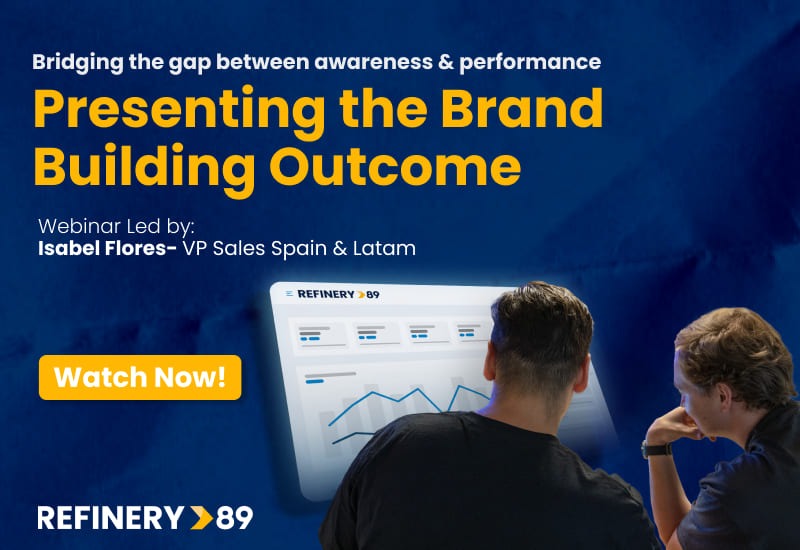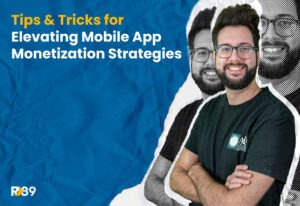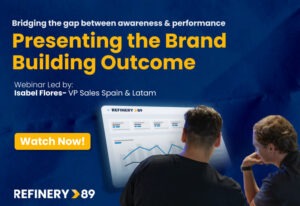La búsqueda está evolucionando. Hemos pasado de las palabras clave a respuestas directas y generadas por IA. La gente ya no quiere navegar sin fin para encontrar la respuesta a sus preguntas. Quieren respuestas instantáneas. Ese cambio de comportamiento abrió el camino para el auge de AEO y GEO. Piensa en ellas como las hermanitas de SEO que se ponen su ropa para salir de fiesta. Misma base, enfoque más moderno. Estas dos tácticas se basan en las reglas fundamentales del SEO, pero afinadas para los hábitos de búsqueda actuales. Entonces, ¿cuál es realmente la diferencia entre SEO, AEO y GEO?
Comprender estos 3 métodos de optimización mejorará tus esfuerzos para aumentar la visibilidad y la capacidad de descubrimiento de tu sitio. Repasemos los conceptos básicos de cada uno y veamos cómo puedes integrarlos en tu estrategia.
¿Qué es SEO?
SEO, o Search Engine Optimization, es esa serie de técnicas clásicas pero efectivas que se utilizan para optimizar tu contenido y aparecer en las páginas de resultados de los motores de búsqueda. El SEO es la táctica original que, hasta hoy, marca los estándares para el posicionamiento. Una estrategia de SEO sólida será uno de los pilares del rendimiento de tu sitio web, facilitando su descubrimiento y, por lo tanto, su crecimiento.
¿Cómo funciona el SEO?
El SEO se puede dividir en 3 áreas de optimización que mejorarán el rendimiento de tu sitio web en los rankings de las páginas de resultados de los motores de búsqueda (SERPs):
- SEO On-Page: Es el conjunto de métodos utilizados para optimizar las páginas individuales y el contenido de tu sitio web para los motores de búsqueda.
- SEO Off-Page: Son estrategias implementadas fuera de tu sitio web para mejorar su posicionamiento en las SERPs, como obtener enlaces de sitios con alta autoridad de dominio.
- SEO Técnico: Es la práctica de mejorar los aspectos técnicos de tu sitio web para ayudar a los motores de búsqueda a rastrear, indexar y descubrir tu sitio de manera más efectiva.
Puedes aprender más sobre SEO en nuestro último artículo ¿Cómo aumentar tu tráfico orgánico con SEO?
¿Qué es AEO?
¡Oye Siri! ¿Qué es AEO? AEO significa Answer Engine Optimization. Es la práctica de estructurar tu contenido para que pueda mostrarse como respuestas directas en los resultados de los motores de búsqueda. Esto incluye fragmentos destacados, paneles de conocimiento, preguntas frecuentes y asistentes de voz como Siri o Alexa.
¿Cómo funciona AEO?
AEO consiste en estructurar tu contenido para que los motores de búsqueda y los asistentes de voz puedan extraerlo fácilmente y ofrecer respuestas instantáneas. Con AEO, no solo compites por aparecer como el primer enlace en una página de resultados; tu objetivo es convertirte en la respuesta. La meta principal es posicionar tu contenido como la opción perfecta para fragmentos destacados, cuadros de respuesta o respuestas de asistentes de voz, asegurando que los usuarios accedan directamente a tu contenido cuando hagan una pregunta.
¿Qué es GEO?
GEO, o Generative Engine Optimization, es un enfoque emergente cuyo objetivo principal es hacer que tu contenido sea más descubrible y útil para herramientas de búsqueda impulsadas por IA y modelos de lenguaje grandes (LLMs), como ChatGPT, Gemini o Perplexity. A diferencia de los motores de búsqueda tradicionales, los LLMs no solo clasifican páginas que los usuarios deben explorar para encontrar una respuesta. Ellos generan respuestas extrayendo contenido de fuentes confiables.
¿Cómo funciona GEO?
GEO también se trata de cómo estructuras tu contenido. Optimizar para GEO significa redactar contenido claro, bien estructurado y creíble que pueda ser fácilmente comprendido, recuperado y mostrado en respuestas generadas por IA. El contenido que demuestra credibilidad, está escrito en un tono conversacional y es relevante para las búsquedas reales de los usuarios tiene más probabilidades de aparecer en respuestas generadas por IA.
Diferencia clave entre SEO, AEO y GEO
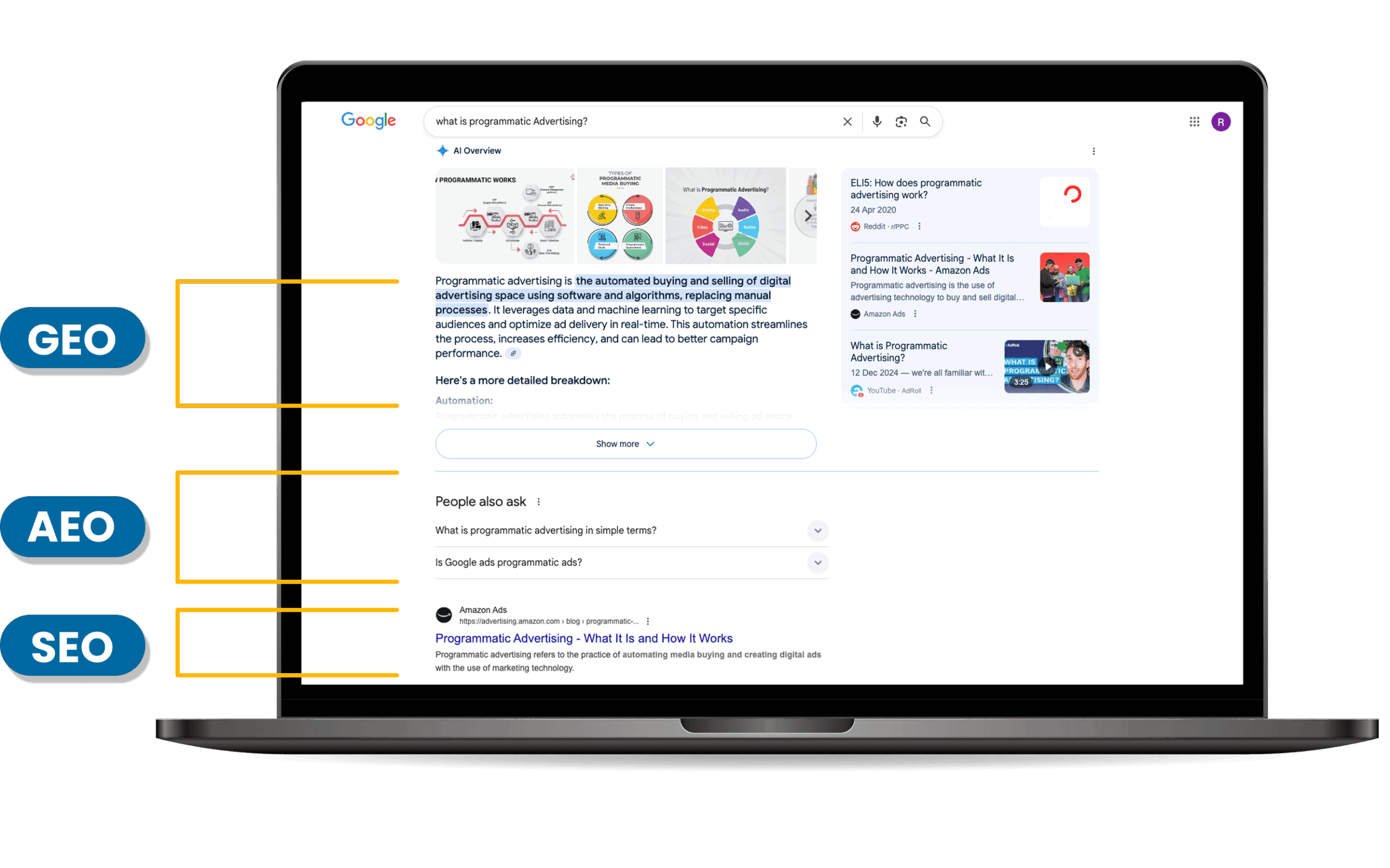
La principal diferencia entre SEO, AEO y GEO es dónde aparecerá tu contenido cuando un usuario realice una búsqueda. Piénsalo así:
- SEO sirve para optimizar tu sitio y posicionarlo en la parte superior de las páginas de resultados de los motores de búsqueda cuando un usuario realiza una búsqueda tradicional.
- AEO sirve para garantizar que tu contenido aparezca en respuestas sin clic, como un snippet o una FAQ en la SERP, o que sea utilizado como respuesta por un asistente de búsqueda por voz.
- GEO sirve para asegurarte de que tu contenido cumpla con los más altos estándares de calidad, de modo que pueda ser referenciado por LLMs en respuestas generadas por IA, como los resúmenes de IA de Google.
¿Cómo optimizar tu contenido para SEO, AEO y GEO?
La clave para lograr la máxima visibilidad y tráfico hoy en día es integrar los tres métodos en la estrategia de tu sitio web. Esto es lo que necesitas optimizar para cada una de estas prácticas:
Mejorando el rendimiento del SEO
- Usa palabras clave relevantes
- Optimiza tus etiquetas de título, encabezados, URLs, meta descripciones y textos alternativos.
- Obtén backlinks de sitios con alta autoridad de dominio (y rechaza cualquier backlink tóxico).
- Mejora la velocidad del sitio y asegúrate de que tu contenido sea compatible con dispositivos móviles.
- Mantén tus Core Web Vitals bajo control para ofrecer una excelente experiencia de usuario.
Hacer que el contenido sea compatible con AEO
- Estructura el contenido en formato de preguntas y respuestas, viñetas o listas numeradas. ¡Como cuando tomabas apuntes en el instituto para entender mejor las cosas!
- Usa respuestas claras, directas y basadas en hechos a preguntas que una persona normal haría.
- Incluye marcado de esquema (datos estructurados) para ayudar a los motores de búsqueda a comprender mejor tu contenido. Este es un tipo de código que aumentará tus posibilidades de aparecer como resultado enriquecido en las SERPs.
Tomando ventaja con GEO
- Sigue los principios E-E-A-T , un marco introducido por Google para evaluar la credibilidad de un contenido en función de cuatro factores: Experiencia, Experiencia profesional, Autoridad y Confiabilidad.
- Escribe en un tono conversacional que coincida con la manera en que los LLM generarían una respuesta.
- Céntrate en temas que sean relevantes para las búsquedas que las personas realmente hacen y asegúrate de que el contenido esté bien estructurado para que la IA lo entienda.
¡Incorpora SEO, AEO y GEO en tu vida!
A medida que los motores de búsqueda como Google siguen desplazando los resultados tradicionales hacia abajo al añadir funciones como cuadros de respuesta y resúmenes generados por IA, y mientras los usuarios adoptan cada vez más herramientas de IA como ChatGPT para obtener información, confiar únicamente en el SEO puede que ya no sea suficiente para generar tráfico orgánico. Para seguir siendo visible donde la gente realmente busca, necesitas ampliar tu enfoque e incluir AEO y GEO.
AEO y GEO son tendencias en crecimiento que están revolucionando la industria, aunque todavía se basan en las mejores prácticas de SEO. Combinar estas tres técnicas, asegurándote de ofrecer contenido de alta calidad, estructurado y fácil de entender para los humanos, potenciará tu visibilidad online. ¡No estaría de más realizar una auditoría de tu sitio web para ver posibles mejoras!
